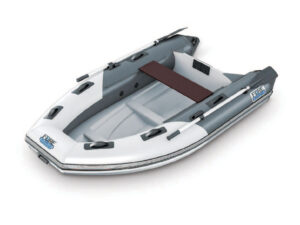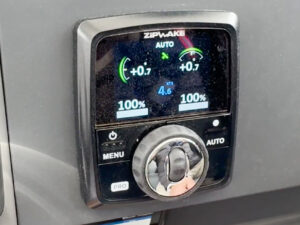Popular theory in boat repair is that the 3M adhesive called 5200 can create a bond stronger than the materials it bonds, and it can’t be unbonded. But is it true? We found one product that the maker claims can “DeBond” 5200.
The popular polyurethane adhesive 5200 has competitors under different brands, but polyurethane is the most-reached-for goo in boatyards and factories when it’s time to mount cleats, through-hull fittings and synthetic teak products, and even join the hull to deck. No wonder. Polyurethane adhesive cures tough and flexible. It sticks to wood, metal, fiberglass and, if you let it cure long enough, your skin too. Fabrics have been repaired with it, and the best-built boats have pounds of it in various places. Its curing process is days long but, curiously, faster when in contact with water, making it ideal for through-hull fittings.
But if you want to undo it, polyurethane is demonic, insidious and tenacious. Bonded deck cleats are so hard to remove that it isn’t unusual to remove gelcoat with them. So I was startled to hear there’s a product that can detach 5200 seams and joints. The gauntlet was thrown down to BoatingLAB, and we set about to create a test, pitting DeBond against acetone, denatured alcohol and MEK solvents commonly used in paint and fiberglass shops.

Performance Report
This is a unique compound with a short story that began when its originator needed to unfasten a boat part secured with 5200. Per its safety data sheet (SDS), the product is a combination of four compounds: methoxypropoxypropyl acetate (a solvent used in ink and paint), nonylphenol ethoxylate (a surfactant used in detergent), and citrus terpene and limonene (compounds found in citrus peels). Terpene is also a form of vitamin A, and some chemists don’t distinguish between terpene and limonene, which are commonly used as organic degreasers. They are flammable, which is why twisting a lemon peel over a candle creates a tiny fire show, but in the order of nasty solvents, this combination barely hits the danger scale when compared to those that follow. These latter chemicals suggested Goo Gone and an orange degreaser would be comparable, but they were primarily acetone-based. How It Works
Well, we don’t know how it actually works, but we do know the literature says to score the adhesive with a knife and spray the scored area with the solvent. Repeat every five minutes, then use some type of wedge, like a screwdriver, to widen the gap and repeat. It was fastest when I pried open the joint and quickest to remove the 5200 residue and gum. Ease of Effort on 5200: 3/3
Ease of Effort on Gum: 3/3 Removed all 5200? Yes
Removed all gum? Yes Zack Stovall

Performance Report
MEK elevates flammable warnings to explosive levels. Breathing it is linked to neurological and organ damage, all prospects adding to the thrill of this test. It is used in gums, rubber, resins and plastics, and as a paint and epoxy remover. There is actually nothing on the label that indicates it’s a solvent ideal for 5200 (or polyurethane), but as one of the most common solvents found in a boat shop, we felt it should be in our test lineup. How It Works
While it’s offered as a paint remover and solvent, no directions were offered on the label for that application. We scored the test bond and brushed the product onto it, and then deepened the cut. It evaporated quickly and was slowest to cut the bond, but worked well at cleaning the residue and did well on the gum, removing it quickly. Ease of Effort on 5200: 2/3
Ease of Effort on Gum: 2/3 Removed all 5200? Yes
Removed all gum? Yes Zack Stovall
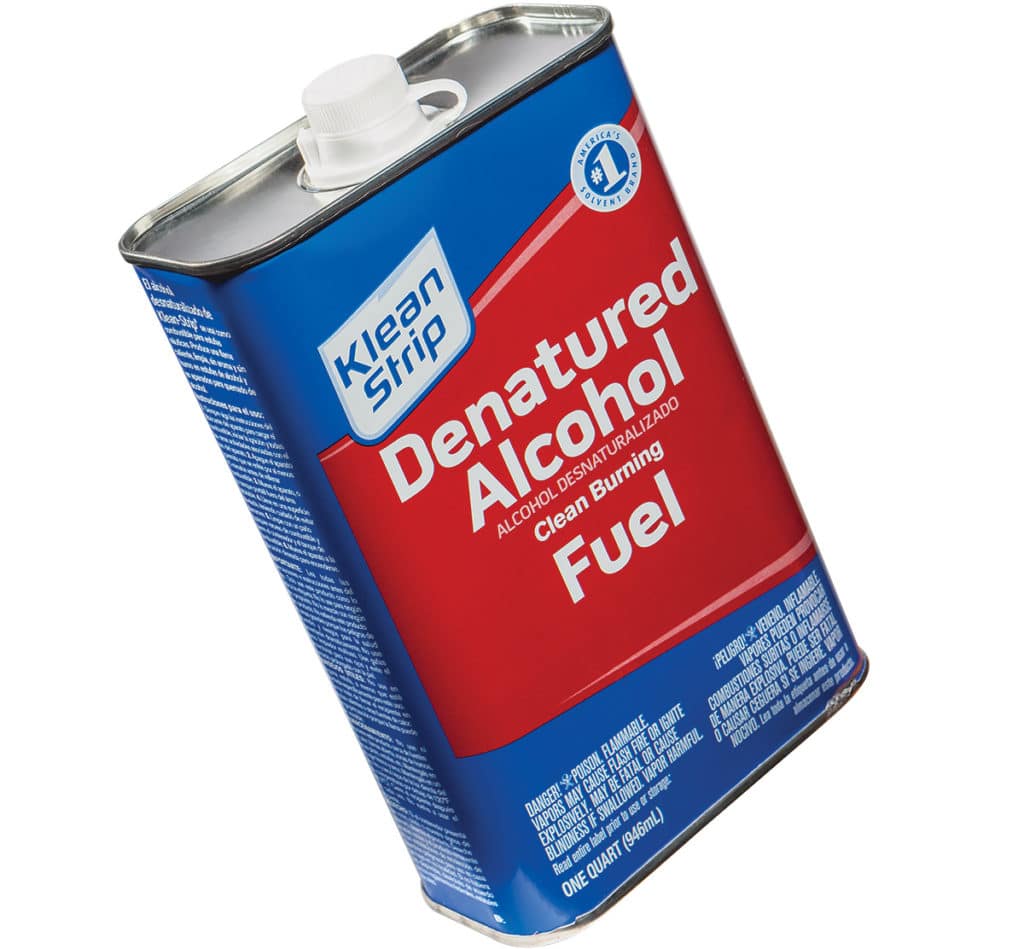
Performance Report
The manufacturer’s SDS on denatured alcohol is even scarier than the one for MEK. It’s flammable, explosive and poisonous. If exposed via breathing, skin contact or ingesting (well, naturally if ingested), call the poison center. Its recommended uses are as a paint thinner, hard surface cleaner and sanding agent, which when applied will lift the grain and evaporate quickly, allowing for more efficient sanding and a smoother finish. How It Works
Denatured alcohol is basically poisoned moonshine unfit for human consumption. If consumed, it may give you one last good party without the annoyance of waking up to a hangover. It’s not noted as a cancer-causing agent, and it isn’t disallowed in California where it could be served to Republicans. It wasn’t any good at gum and poor on 5200. Ease of Effort on 5200: 2/3
Ease of Effort on Gum: 1/3 Removed all 5200? Yes
Removed all gum? No Zack Stovall

Performance Report
Climbing the scale of explosivity, we come to boatbuilding’s oldest solvent — acetone. It evaporates so quickly that it feels cool on your hands while it penetrates and burns the upper cells. It is used to thin fiberglass resins, epoxy and adhesives. Dire warnings aside, acetone is the chief ingredient in nail-polish remover to prep the nail for a new coat. Acetone keeps things clean in organic chemistry labs, but it would be a poor substitute for 409. How It Works
The water-soluble solvent evaporates quickly but also mixes with resins and many adhesives, a property that gives it the ability to remove such compounds where they are no longer wanted. Like the fast-evaporating denatured alcohol, we brushed it on a scored edge of the 5200, waited and scored again. It was lousy at removing 5200 — no news there. Ease of Effort on 5200: 1/3
Ease of Effort on Gum: 1/3 Removed all 5200? Yes
Removed all gum? Yes Zack Stovall
How We Tested
Regal Marine in Orlando, Florida, donated some fiberglass hatch cutouts as test panels. We fashioned five panels to be easily clamped to a bench. Then we bonded smaller panels to them using 5200. Since 5200 cures faster when it’s moist, we misted it with water immediately, and then again two days later, and let the panels cure for seven days — longer than the literature called for.
Removing 5200 per the DeBond directions required scoring the adhesive bond with a knife, spraying the product on the scored mark, allowing it to soak in, and then scoring, spraying and repeating until the bond was removed. This was the procedure we used with all the solvents.
Chewing gum happens, so we pressed some into an unfinished open-grain board and let it harden for 24 hours, then used a rag and the solvent to remove it.
How We Scored
Product successfully removed 5200: Yes or No
Removed chewing gum: Yes or No
Ease factor (how much effort was needed?): Easy = 3, OK = 2, Difficult = 1

After a week, our 5200 had cured around the edges of the panels about a ½ inch underneath, but not in the center. That could take weeks we didn’t have in the schedule. We worked each product as close to the same way as possible. Step 1
We scored the adhesive bead which allowed the solvent to penetrate into the bead to do its work. Only DeBond came in pump and aerosol containers for easy application. We wiped on the other products, or dribbled them on as carefully as possible. Randy Vance
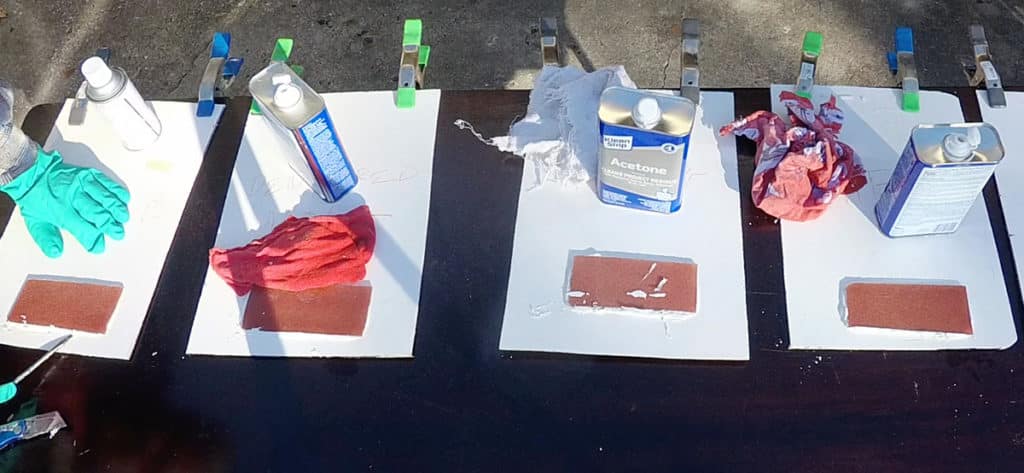
On each panel, we scored, then doused, then moved on to the next panel, allowing five minutes or so between application and scoring. After we had scored deeply enough to wedge a screwdriver into the gap, we did so, adding more solvent and repeating to get them off. Randy Vance
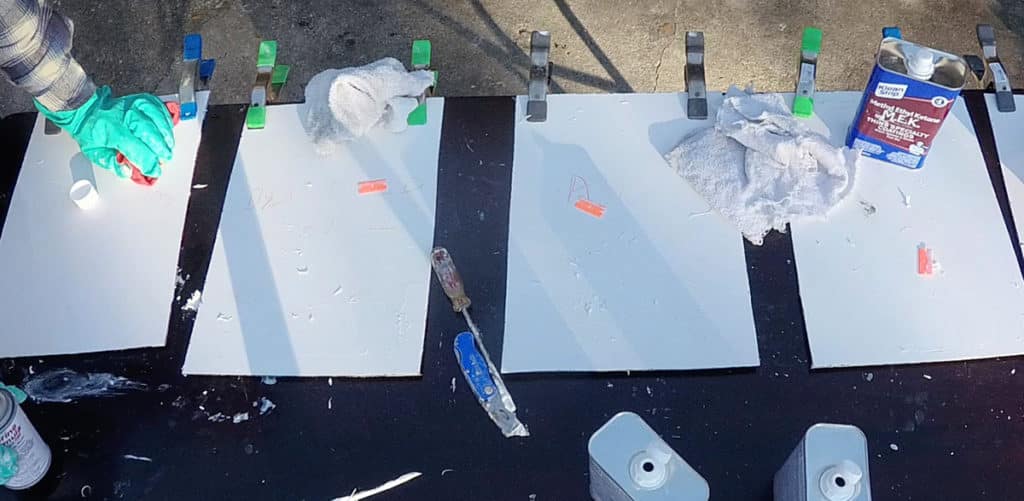
Step 3 was to remove the residue, a process we concluded with plastic razor scrapers. The DeBond did this faster, as was the case with the initial removal of the panel. It’s higher viscosity may have aided in this, keeping the product working instead of evaporating. Randy Vance

